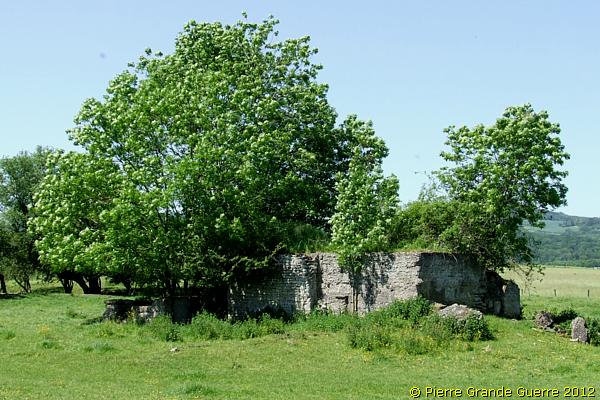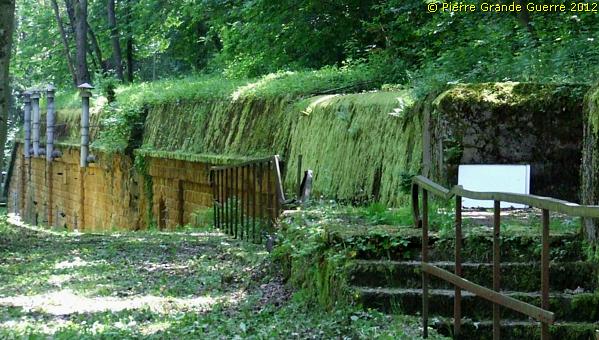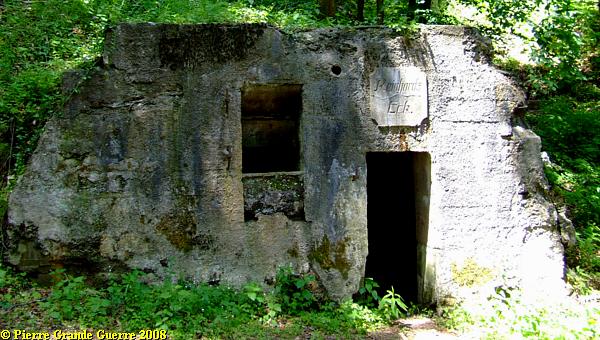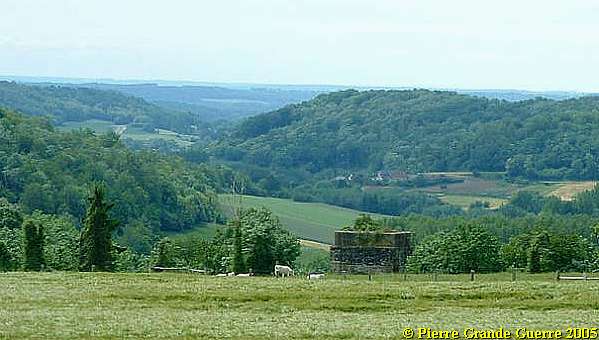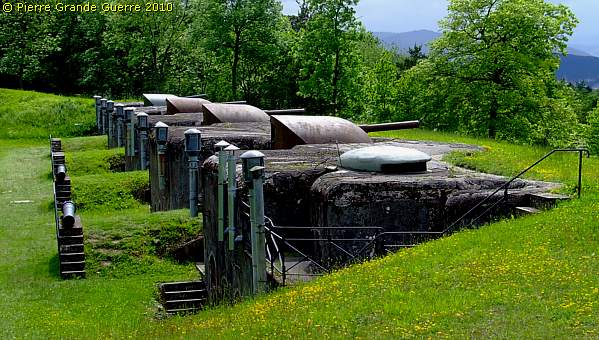ARTOIS - Neuve Chapelle - Richebourg
- by duda-wsm
- •
- 11 May, 2019
- •
Year of visit: 2010, 2014
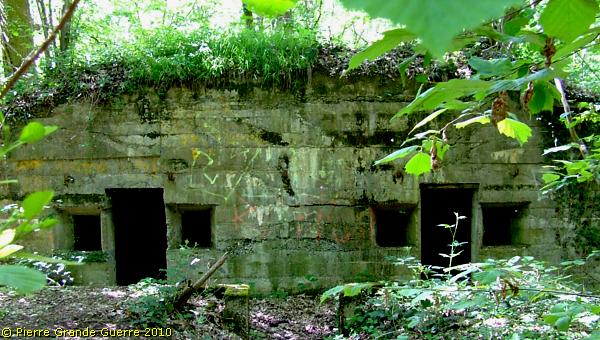
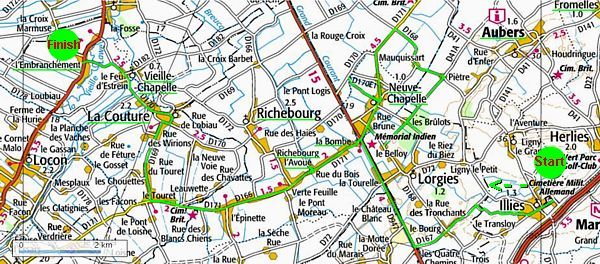
Introduction
These battlefields in this relatively small area around Neuve Chapelle and Richebourg knew many battles: 28 October 1914, 16 December 1914, the spring offensives of 1915, the Battle of Neuve Chapelle (10-13 March 1915), the Battle of Aubers Ridge (9 May 1915), the Battle of Festubert (15-25 May 1915), the Battle of Fromelles (19-20 July 1916) and the German spring offensive of 21 March 1918. For this reason we will find on our route through this area relics and memorials of all war periods. We depart from Illies, a village 4 km. south of Aubers at the German side of the frontline of 1916. Later on this page we will pass and visit other sites relating to all these periods, but we try to concentrate on the Battle of Neuve Chapelle of 1915.
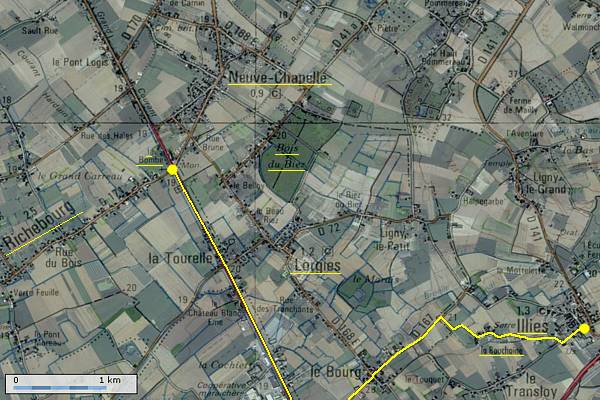
We continue by car north-east in the direction of Neuve-Chapelle to the crossroads of the Rue du Bois and the road of la Bassée-Estaires, in wartimes known as Port Arthur, nowadays called la Bombe.
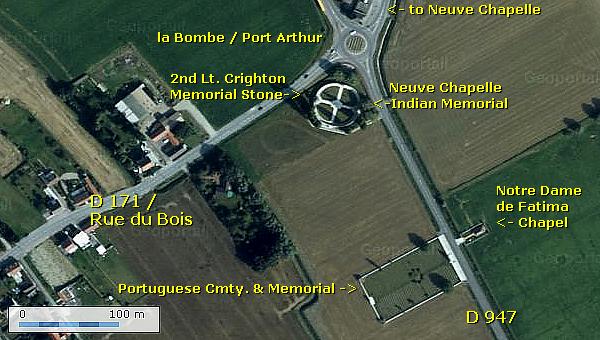
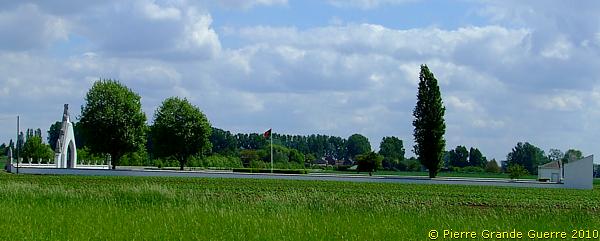
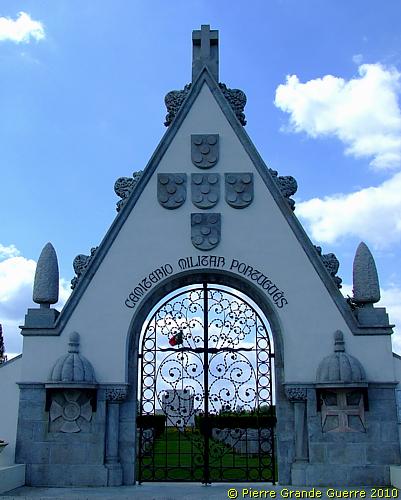
The Cemiterio Militar Português contains 1.831 burials, of whom 239 soldiers are unknown. The graves of these unidentified soldiers are engraved with the text: “Desconhecido” .
The cemetery has been constructed in 1924. Until 1938 the human remains of other Portuguese soldiers, buried first somewhere else in this region like at le Touret, were reburied in this cemetery.
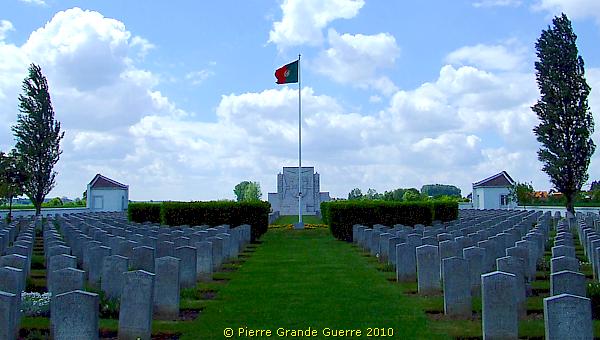

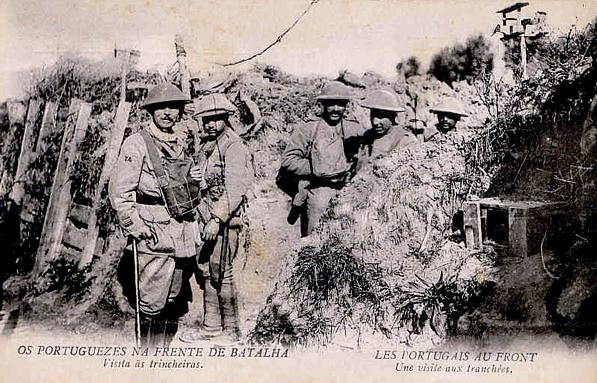
Despite its old alliance with Britain, Portugal kept its neutrality during the first years of war. Portugal suffered from the German U-Boat warfare which sought to blockade the United Kingdom, at the time the most important market for Portuguese products. Clashes also occurred with German troops in the south of the Portuguese colony of Angola, Africa. Initially the Portuguese governments formally stuck to neutrality. Eventually the tension between wanting to comply with British requests and staying neutral grew too great. When Portugal complied with the British request to confiscate the German ships, which were interned in Portuguese ports, Germany reacted on 9 March 1916 by declaring war on Portugal.
The Corpo Expedicionário Português
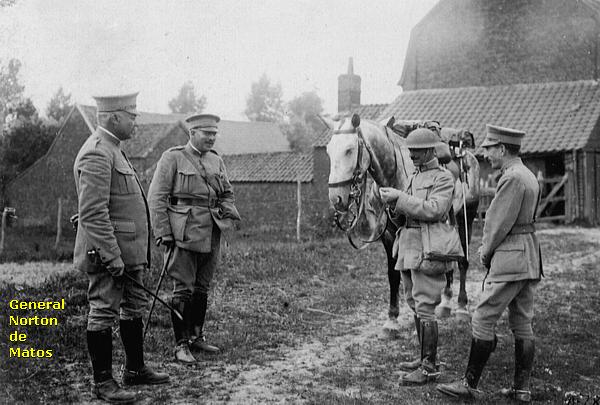


Portuguese Casualties of the Great War
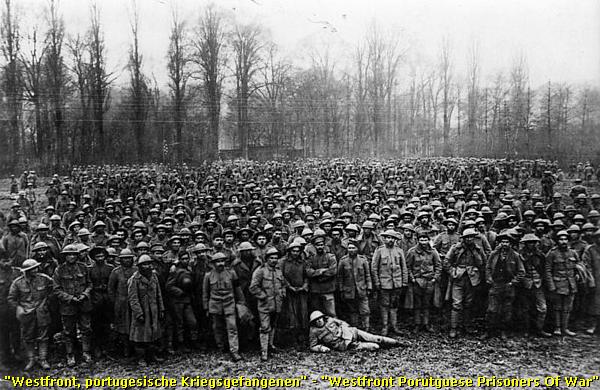
We continue our visit to the cemetery.
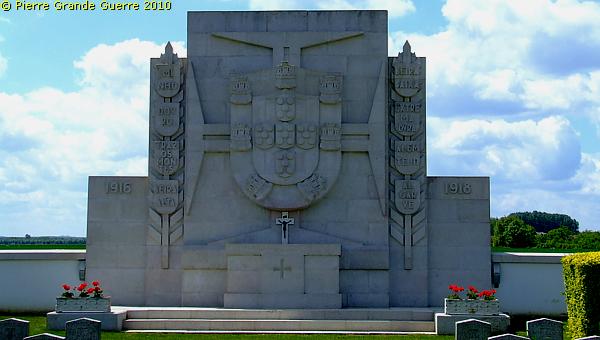

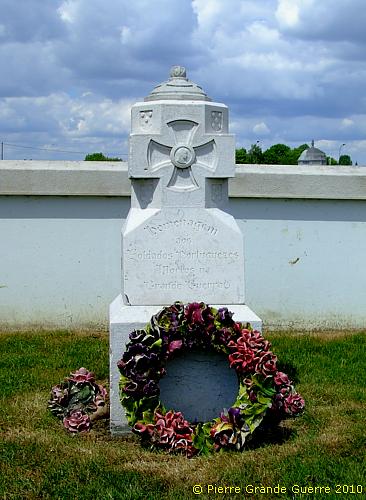


The Battle of Neuve Chapelle - 10-13 March 1915

The British, ultimate aim of the Battle of Neuve Chapelle was to cause a rupture in the German lines for a rush on Aubers Ridge to occupy next Lille. On the same time there was planned a French attack of the French 10th Army at Lens, Vimy Ridge, and Arras. The situation in the Champagne sector however, where General d'Esperey's offensive was becoming successful, led to the postponement of this French operation in the Artois.
The Battlefield
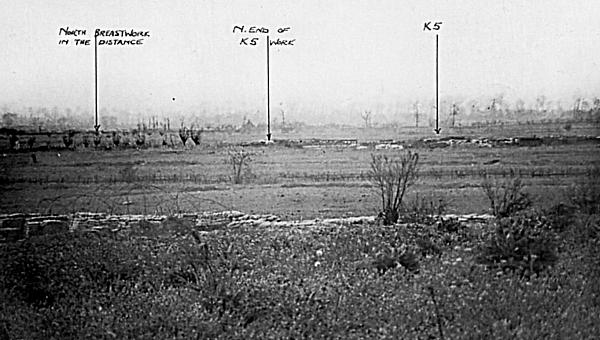
The battlefield around Neuve Chapelle is open, flat country. The ground here is cut by many small drainage ditches. Sometimes in winter the fields were flooded. Because of the high groundwater level of only 60 cm. deep the soldiers were not able to dig trenches in this area, but constructed instead above ground breastworks.
The German Defenders
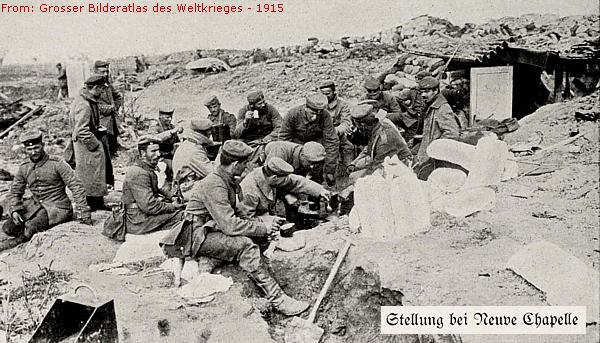

The 13. Infanterie Division (13. I.D.), under command of Generalleutnant Kurt von dem Borne, consisted of the 25. Brigade with Infanterie Regiment 13 and I.R. 158 and the 26. Brigade with I.R. 15 and I.R. 55. It was assisted by FeldArtillerie Regiment 22, F.A.R. 58, and several Pioniere units.
The German 14. Infanterie Division, under command of Generalmajor von Ditfurth, consisted of the 27. Brigade with I.R. 16 and I.R. 53, and of the 79. Brigade with I.R. 56 and I.R. 57. It was assisted by F.A.R. 7, F.A.R. 43, and Feld Pioniere Kompagnie 7.
On 10 March 1915 I.R. 13 defended with 2 companies of Jäger Bataillon 11 the first line in and around the village of Neuve Chapelle.
The British Attackers

General Haig deployed units of 2 Army corpses of his 1st Army: Brigades of the (British) Indian Corps under command of General Willcocks, and of the IV Army Corps under command of General Rawlinson. The IV Army Corps consisted of the 7th and 8th Divisions. The Indian Corps consisted of the Lahore Division and the Meerut Division.
Battle Preparations
Aerial Reconnaissance
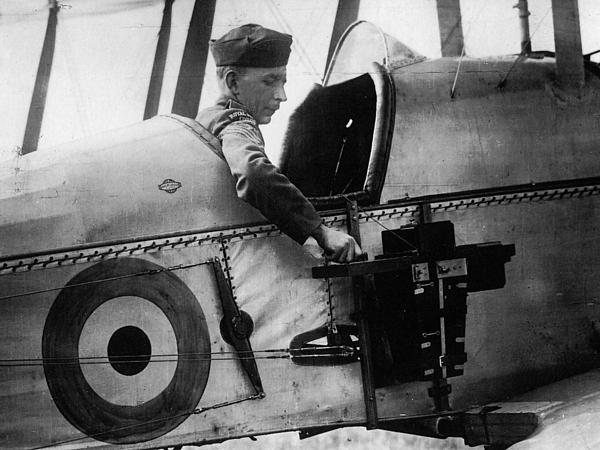
During the preparation of the Battle of Neuve Chapelle it was the first time that aerial photography was to play a prominent part in a major battle. Before the battle the 2nd and 3rd Squadrons of the Royal Flying Corps made for the first time aerial photographs of the German positions. The entire German lines were mapped from the air. These photographs were used for editing the first, rather reliable trench maps of the German lines. Though the aerial photography had been useful to an extent, it was unable to efficiently identify the more strong defensive postitions. During the battle itself the Royal Flying Corps quickly secured aerial dominance, and it set about bombarding German reserves and transports to defend the threatened lines.
Preliminary Bombardment
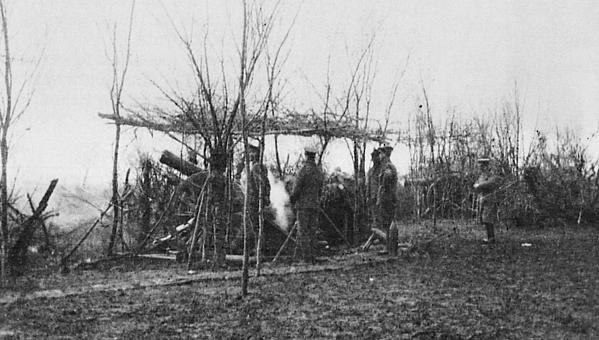
Due to a serious lack of shells the preliminary bombardment started at 7.30 AM with 342 artillery guns, but lasted only in total 65 minutes. The first phase of a 35 minute bombardment was directed at the front line, then the next phase of 30 minutes was aimed at the village and second line positions behind the village, like the Smith Dorrien Trench.
The Ground Offensive
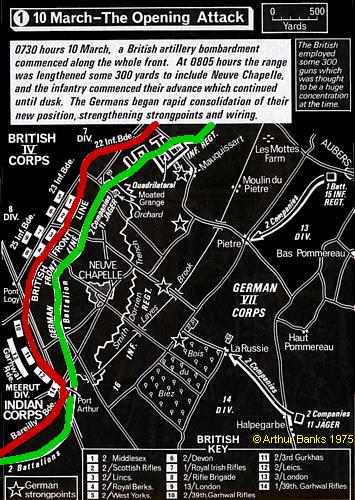
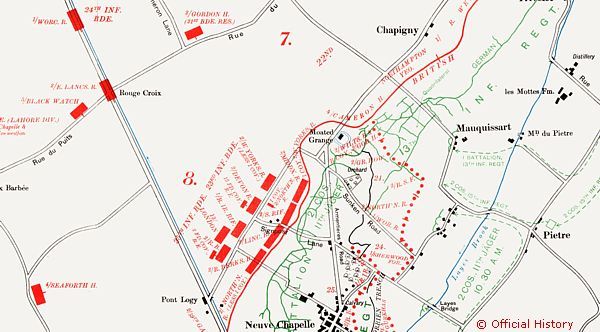

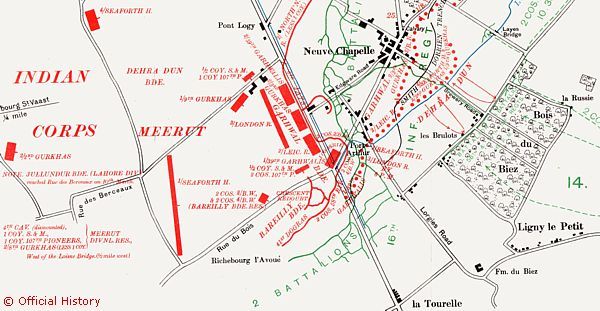
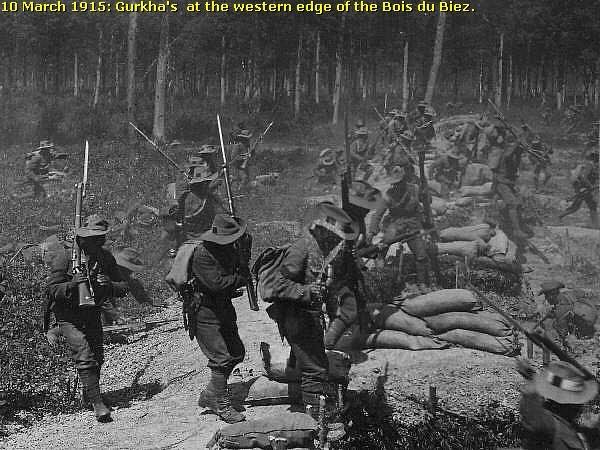

The Gharwal Brigade of the Indian Corps advanced successfully, with the exception of the 1/39th Gharwal Rifles on the extreme right. The 1/39th went astray and plunged into a barbed wire defence, untouched by the bombardment. The 1/39th Gharwal Rifles suffered many losses.
German Reinforcements at the second line
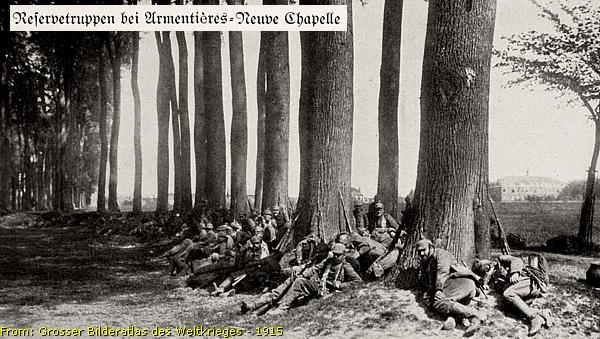
During the night the Germans reinforced their second line in front of the Bois du Biez. Crown Prince Rupprecht von Bayern ordered Generalmajor von Ditfurth to organise reserve troops to deploy counterattacks. These reserves arrived at 12 March.
All further British attempts over the next few days brought little material success.
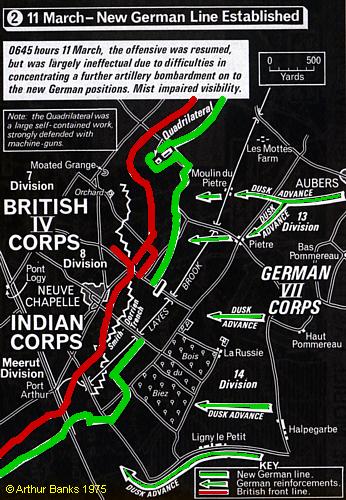
12 March: German Counterattacks
On 12 March under command of Generalmajor von Ditfurth the 14. Division, reinforced with the Bavarian 14. Reserve Infanterie Brigade, launched a series of counterattacks, which managed at least to halt the British advancement any further .
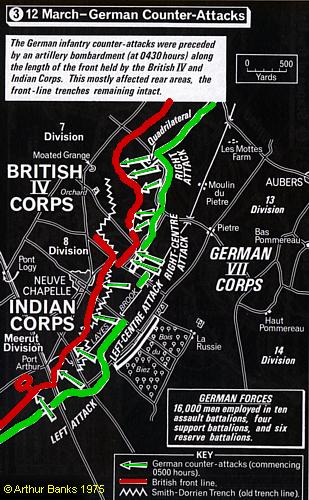


40.000 British troops took part during the battle and suffered all together 11.200 casualties; 7.000 British and 4.200 Indians.
The Germans lost around the same number. During the period of 6 – 29 March 1915 the 13 I.R. for instance suffered 21 officers and 1.301 NCO’s as casualties, killed, wounded, or missing. During the period of 7- 12 March 1915 the 8th Battalion of the 16. I.R. of the 14. I.D. counted 589 casualties, among these 16 officers.
After all the British succeeded in capturing only some 2 km. of lost ground.
The Aftermath: Shell Crisis
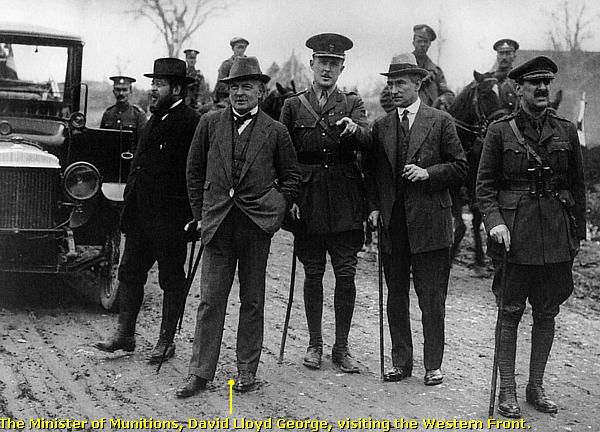
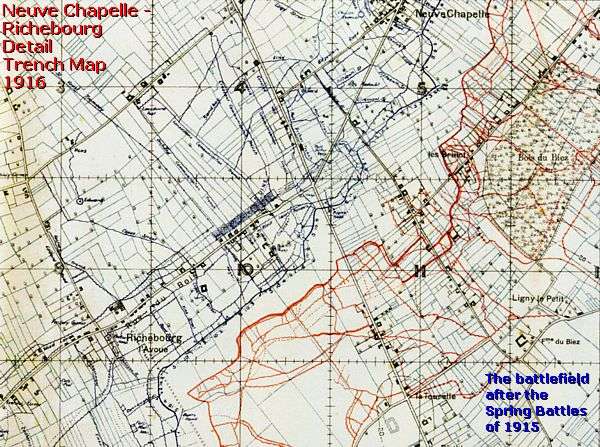
After this intermezzo we have arrived at the northern part of the circular wall around the Neuve Chapelle Indian Memorial.
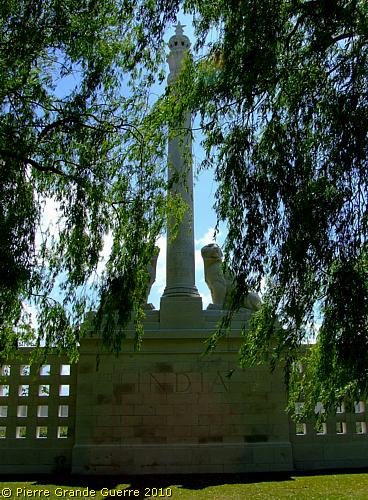
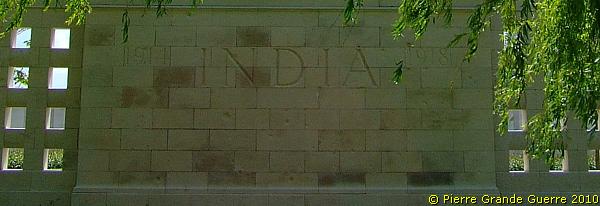
The Neuve Chapelle Indian Memorial commemorates 4.742 Indian soldiers with no known grave, who fell in battle while fighting for the British Indian Corps during the Great War. The location of the memorial was chosen because of the participation by Indian troops at the Battle of Neuve Chapelle.
The memorial, designed by Sir Herbert Baker with lion sculptures by Charles Wheeler, is a circular enclosure. One half of the circular enclosure consists of panels of names of the dead, while the other half is open. Other architectural and sculptural features of the memorial include two small domed chattris. The main inscription is in both English and French, while the column also bears an inscription in English, Arabic, Hindi and Gurmukhi: "God is One, His is the Victory".
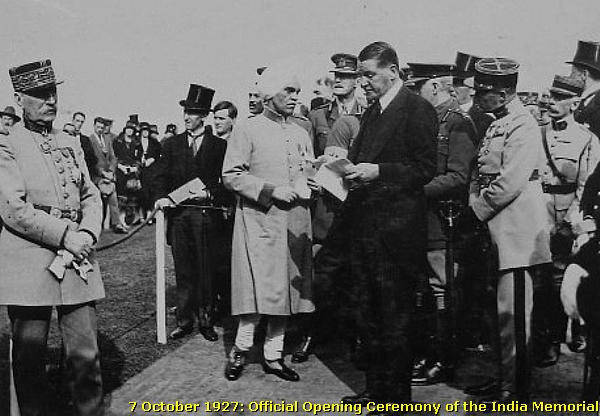
The memorial was unveiled by the Earl of Birkenhead on 7 October 1927. The Earl of Birkenhead (Frederick Edwin Smith), who was present as Secretary of State for India, had served in France from 1914 to 1915 as a staff officer with the Indian Corps. Also present at the ceremony were Field Marshall Jacob, in the beginning of 1915 still Major-General and commander of the Dehra Dun Brigade and from September 1915 commander of the Meerut Division, next the French Minister of Colonies, Perrier, and Marshal Ferdinand Foch, who speeched in French. Attending the ceremony was a contingent of troops from India to represent the units that fought in France, including Sikhs, Dogras, and Garhwalis. There are two recipients of the Victoria Cross commemorated on the Neuve Chapelle - Richebourg Memorial: William Arthur McCrae Bruce, and Gobar Sing Negi. |
The central pillar bears an inscription in English, Arabic, Hindi and Gurmukhi:
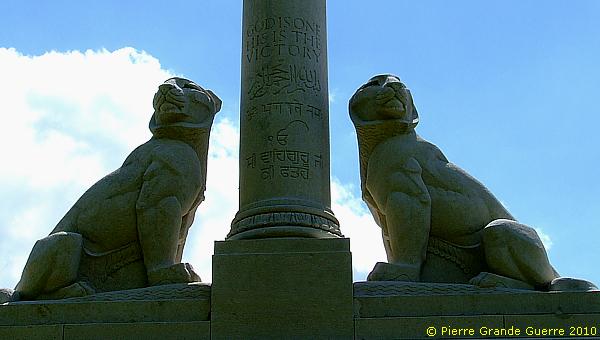

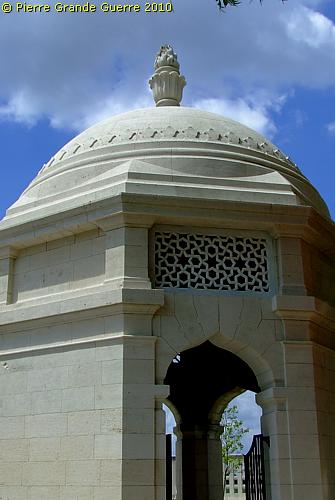
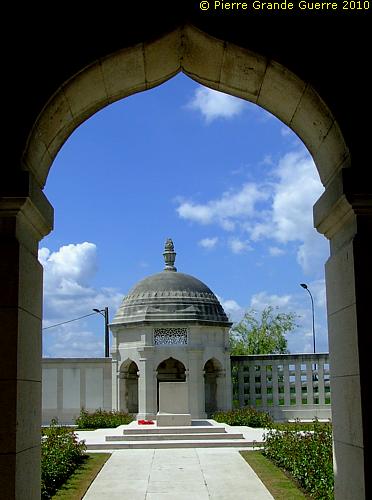

The central pillar, topped by a lotus capital, and carved representations of the Star of India and the Imperial Crown.

The wall beneath the lions mentions all battlefields, where British Indian soldiers fought.
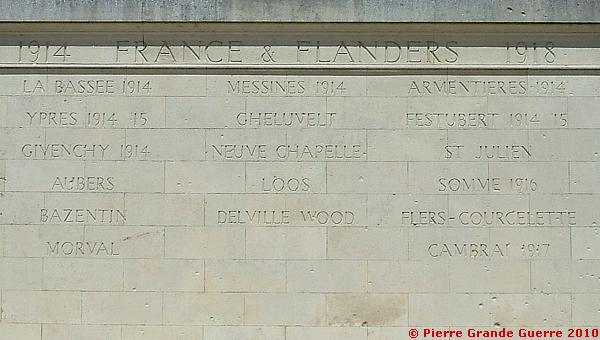

From the early days of the war the Indian Corps saw a significant amount of combat around Neuve Chapelle. First the Indian Corps attempted to seal the breach, that the Germans (under General Erich van Falkenhayn) had created in the British Line just south of Neuve-Chapelle. On 28 October 1914 the Indian Corps initially succeeded in entering into the village of Neuve Chapelle, but were forced to retreat after a strong German counter attack. Further fighting continued for a week with the additional loss more than 500 Indians killed, with 1.450 wounded. In December 1914 the Indian Corps moved to the Givenchy area south of Neuve Chapelle. On 16 December 1914 they attempted to capture a German front trench line without success, losing 54 men. This raised the total number of killed men to that date to over 2.000.
The Indian Corps provided half the attacking force at the Battle of Neuve Chapelle. It was one of the major engagements for the Indian Army on the Western Front. Elements of the Indian Corps participated in attempts to break the German lines at Neuve Chapelle and went on to capture Aubers.
During the Battle of Neuve Chapelle some logistical failures in moving British guns within range to cover the advance caused that Indian troops had to attack without covering fire. By these artillery failures almost 1.000 Indian soldiers were killed.

In front of the Memorial Wall: the Stone of Remembrance.

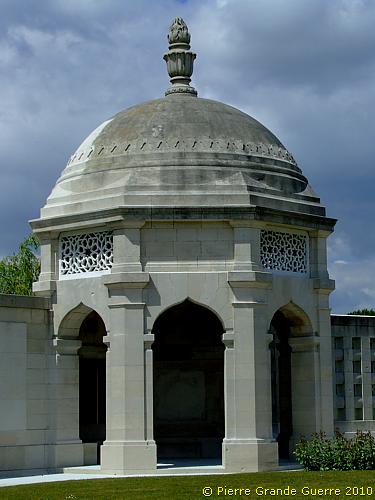
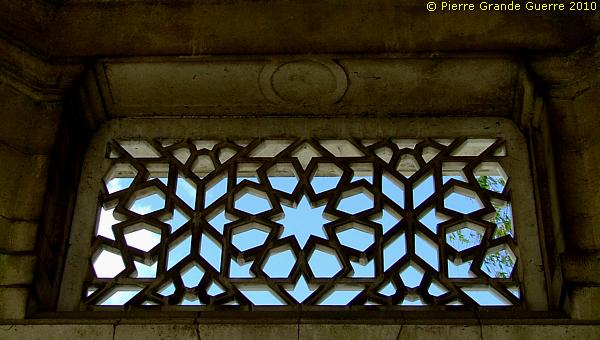
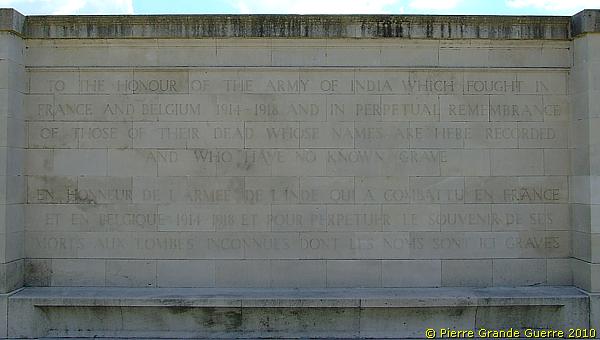
One half of the enclosure consists of panels with endless lists of names of the dead.
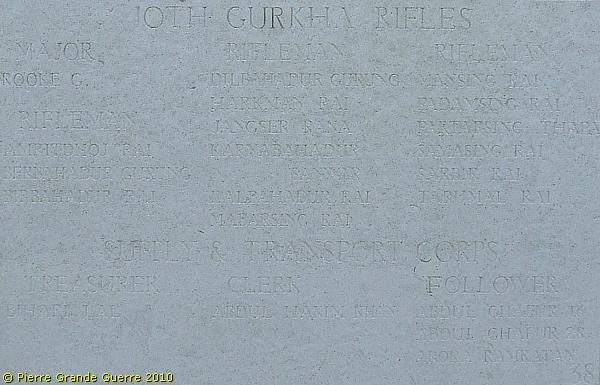
On the panels you will encounter different British Indian Army ranks, like Lance Naik and Sepoy.

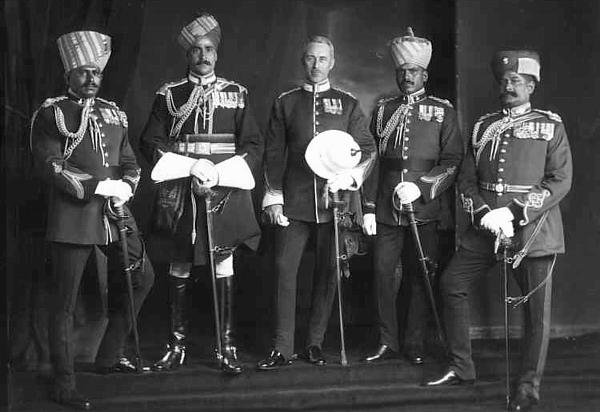
Commissioned Officers
Commissioned officers, British and Indian, held identical ranks to commissioned officers of the British Army.
Viceroy's Commissioned Officers
Viceroy's Commissioned Officers were Indians holding officer ranks. They were treated in almost all respects as commissioned officers, but only had authority over Indian troops and were subordinate to all British King's (and Queen's) Commissioned Officers and King's Commissioned Indian Officers.
- Subedar Major or Risaldar-Major (Cavalry) equivalent to Major
- Subedar or Risaldar (Cavalry) equivalent to Captain
- Jemadar equivalent to Lieutenant
Non-Commissioned Officers
- Company Havildar Major equivalent to Company Sergeant Major
- Company Quartermaster Havildar equivalent to Company Quartermaster Sergeant
- Havildar or Daffadar (Cavalry) equivalent to Sergeant
- Naik or Lance-Daffadar (Cavalry) equivalent to Corporal
- Lance-Naik or Acting Lance-Daffadar (Cavalry) equivalent to Lance-Corporal
Soldiers
- Sepoy or Sowar (Cavalry) equivalent to Private, or Gunner, or Sapper.
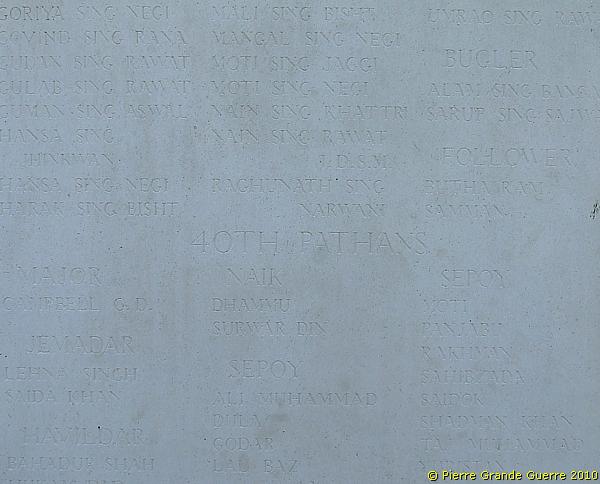

In 1964 a bronze panel was added, which includes the names of 206 soldiers, whose graves were first at Zehrensdorf (Germany).
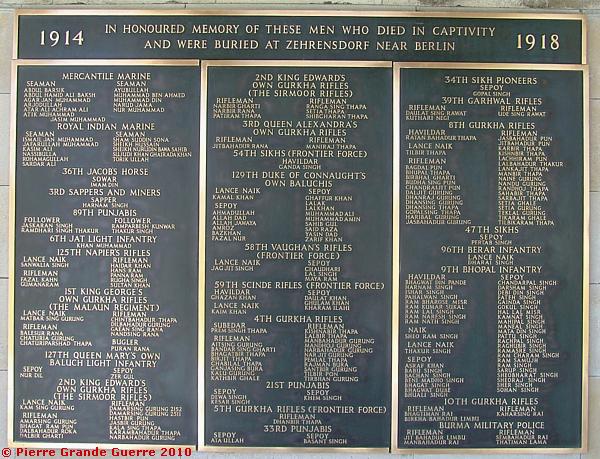
For one reason or another these German graves could not be preserved.

We leave the memorial, and outside we return to the west, to find this private memorial along the infamous Rue de Bois.

The Memorial of 2nd. Lt. Crighton of the 3rd. Battalion London Regiment Royal Fusiliers, who fell on 10 March 1915 near this spot. (On the other side of the crossroads, the memorial has been moved.)
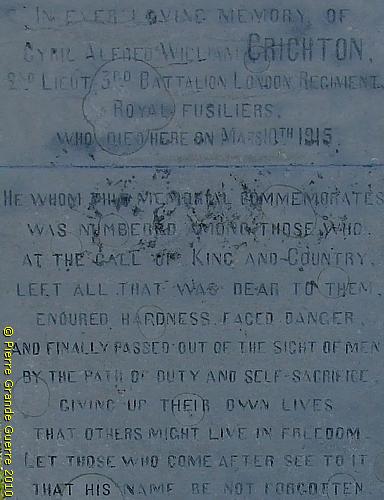
We continue our route by car entering the village of Neuve Chapelle.
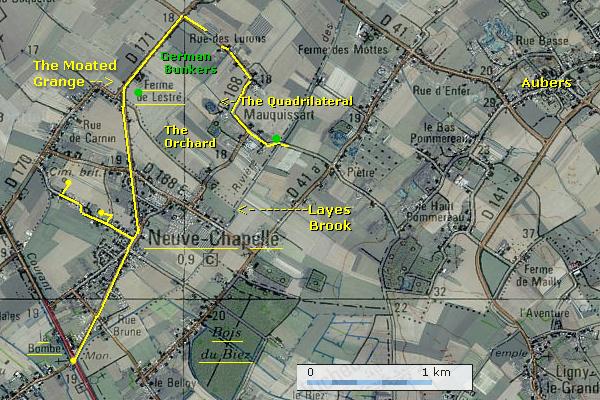
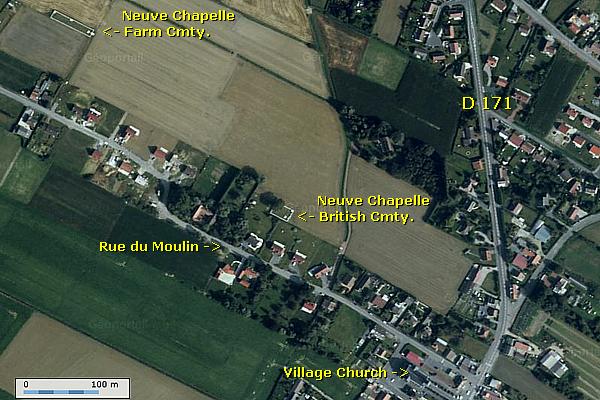
Neuve Chapelle, seen from the south-east. The village has given its name to the battle, which began on 10 March 1915.
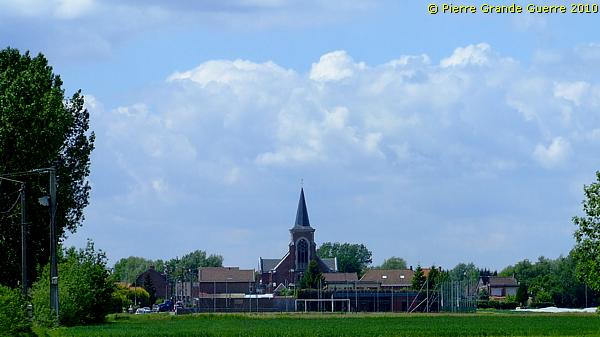
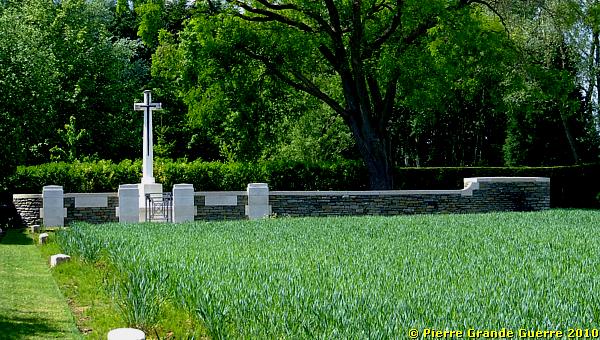

Source of all Commonwealth cemeteries on this web page: Commonwealth War Graves Commission
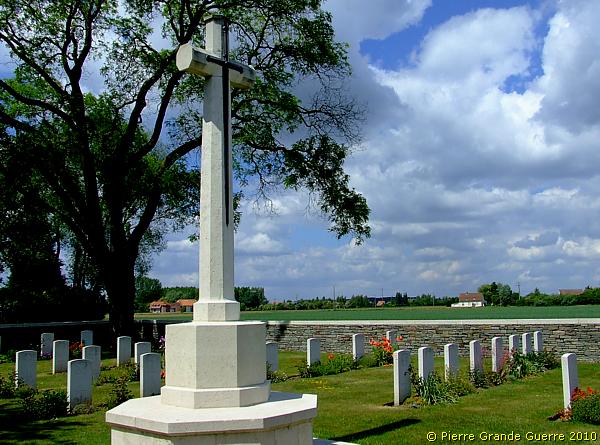
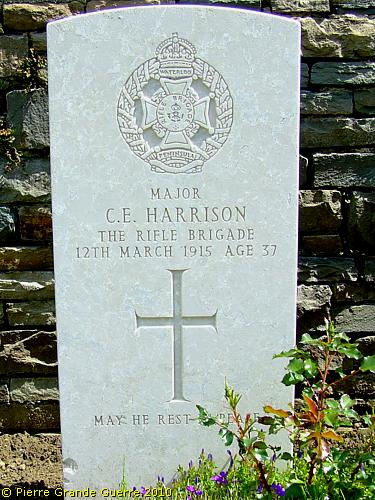
Special memorials record the names of five soldiers, buried in Neuve Chapelle churchyard, ...
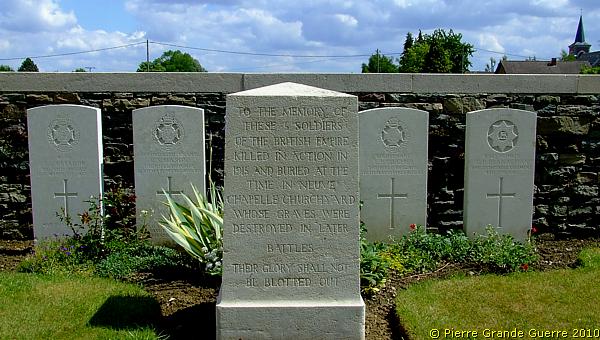
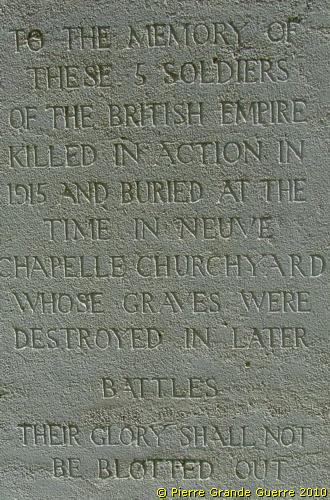
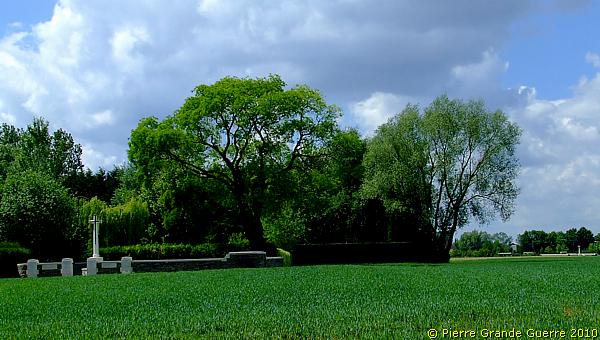
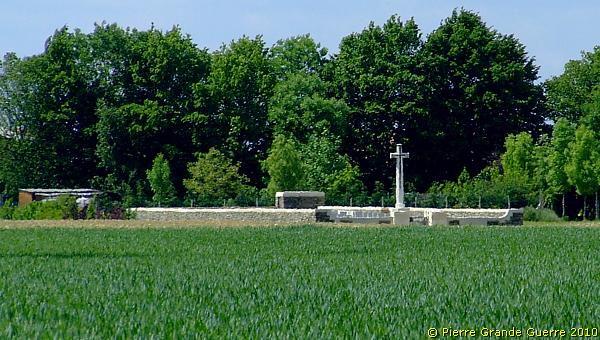
Neuve Chapelle Farm Cemetery was begun by the 13th London Regiment (The Kensingtons) during the Battle of Neuve Chapelle. There are now over 60, 1914-18 war casualties commemorated in this site. Of these, nearly half are unidentified and special memorials are erected to 13 men of the Kensingtons, who are buried among them. The cemetery covers an area of 585 square metres and is enclosed by a rubble wall. |
Due to heavy traffic we are for safety reasons forced to stay in the car. Alas we have to pass infamous sites like the Orchard, the Moated Grange, the Lestré Farm, and the Quadrilateral without being able to take pictures. But near the hamlet of Mauquissart and the bridge over the Layes brook, we were able to safely park our car to inspect this German bunker.
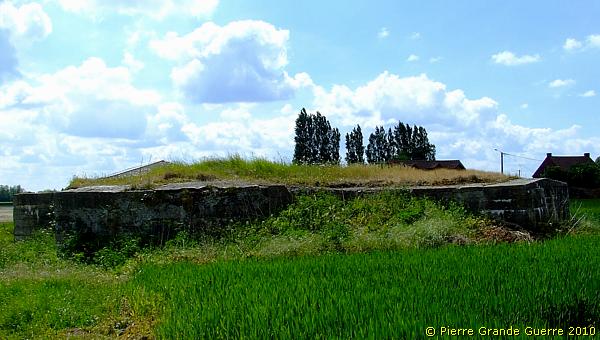
This second line bunker is near the location of the Nameless Cottages, ...

... and stands along the Rue du Pietre. I did not enter it, because it was alas filled with recent garbage.
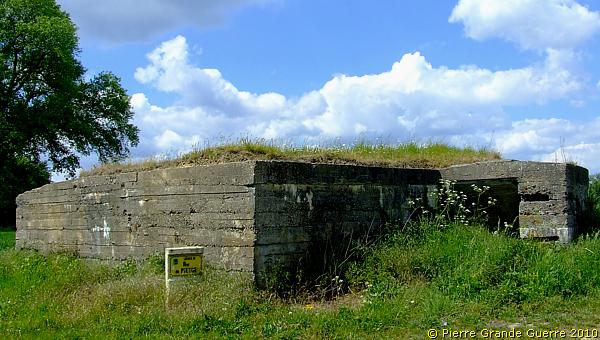
We continue to the Bois du Biez, passing other German bunkers in the fields on the left side and on the right side of the road.
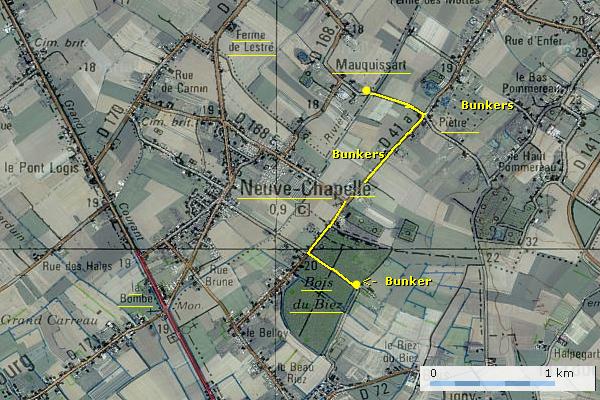
The western edge of the Bois du Biez, until where the Gurkhas came and were forced to retreat.


From the junction to the entrance to the Bois du Biez: a view at Neuve Chapelle.


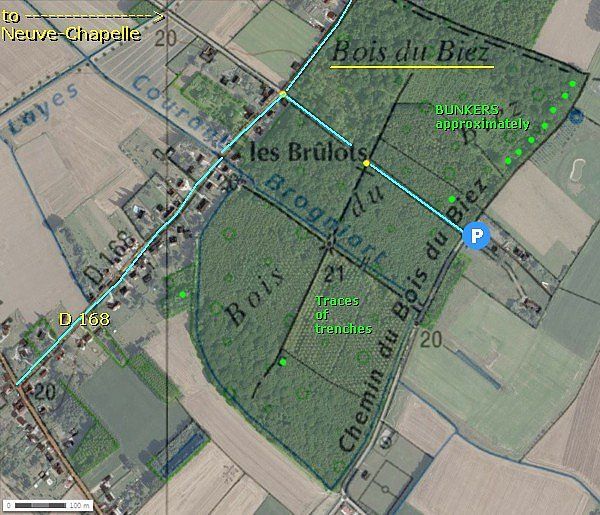
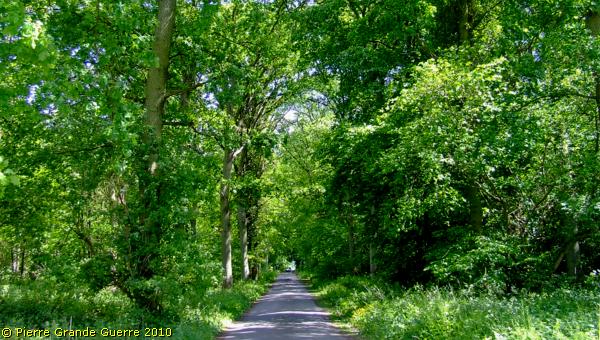
At the eastern edge of the wood I made a short walk to detect this German double dug-out bunker.


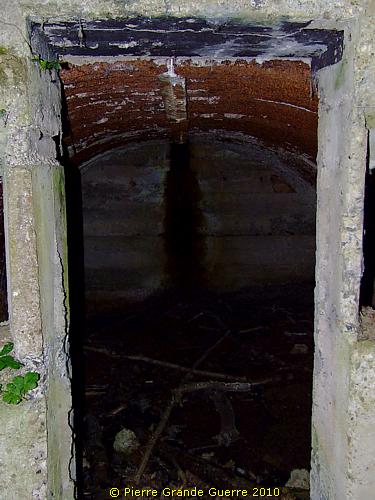
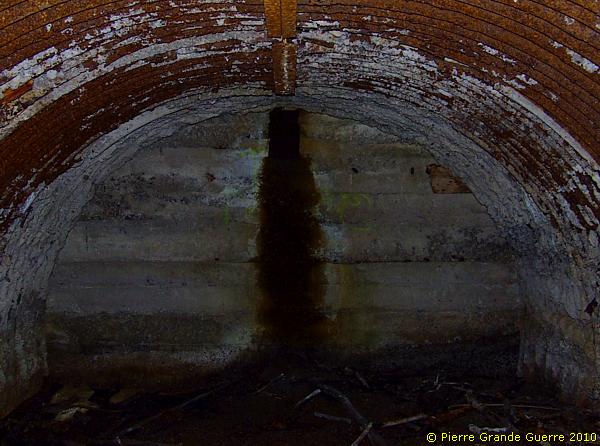
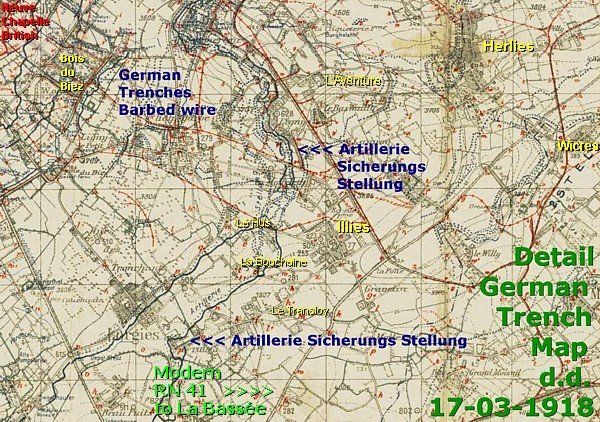
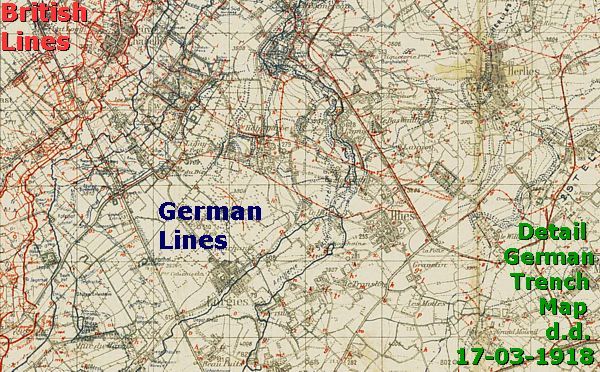
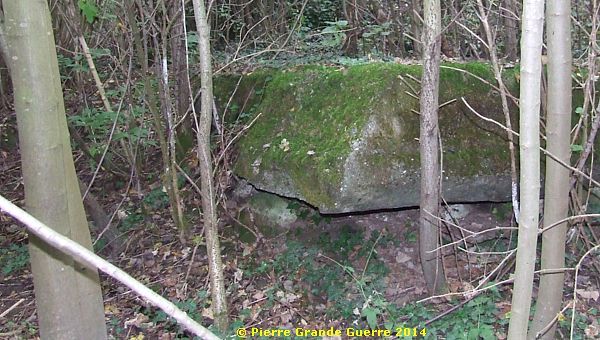
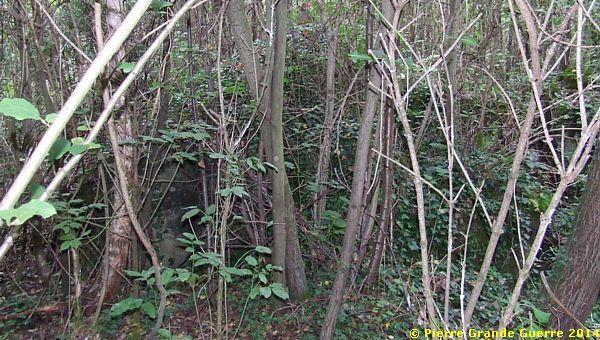

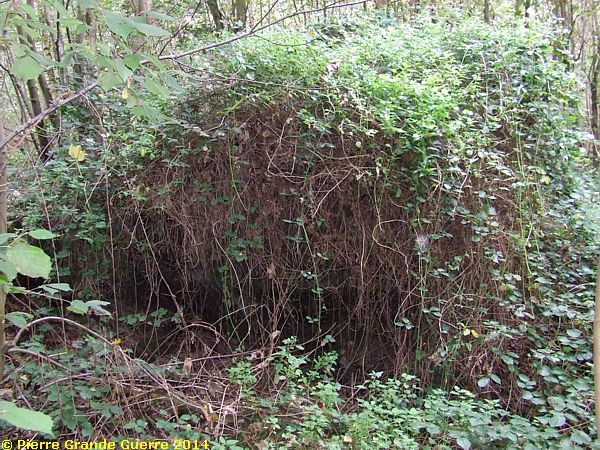
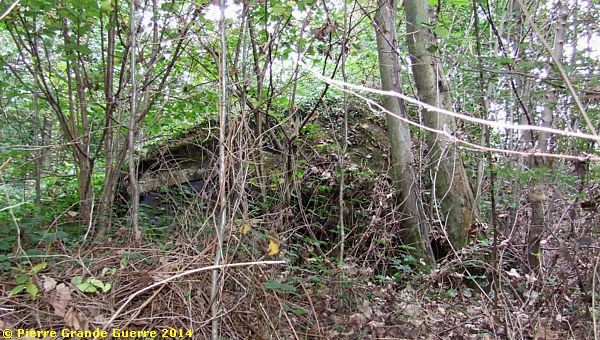
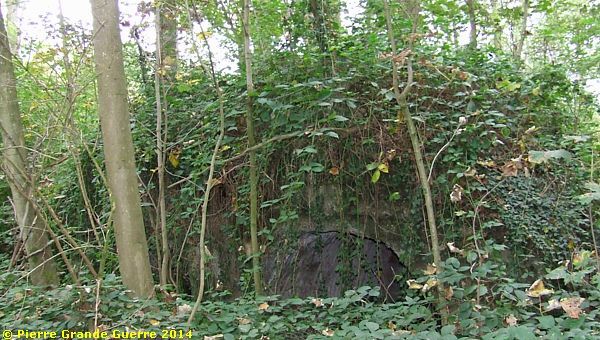

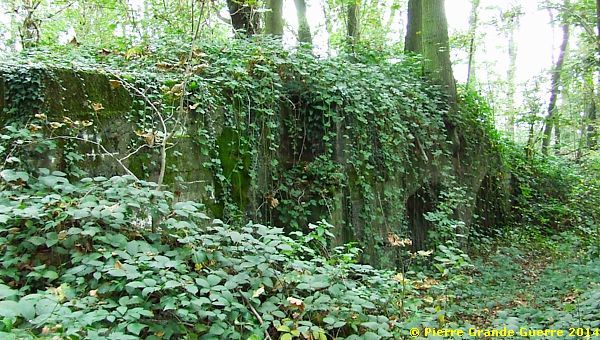
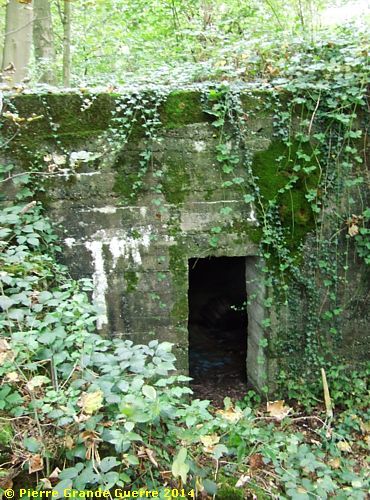


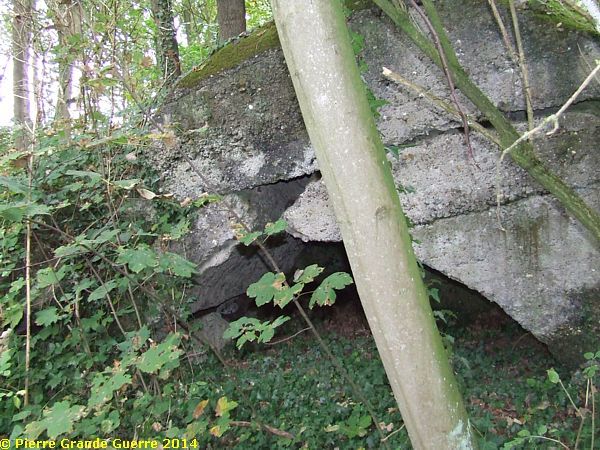

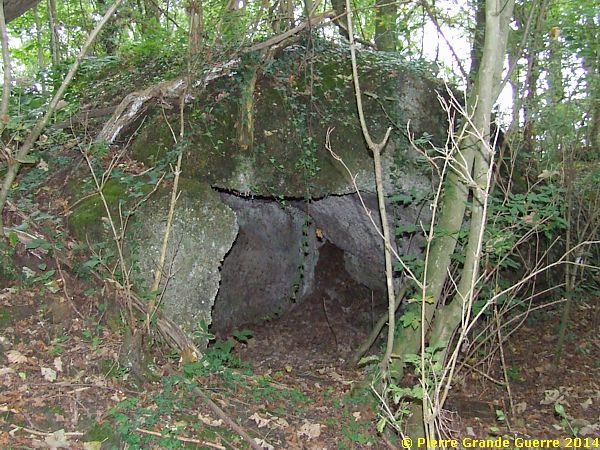

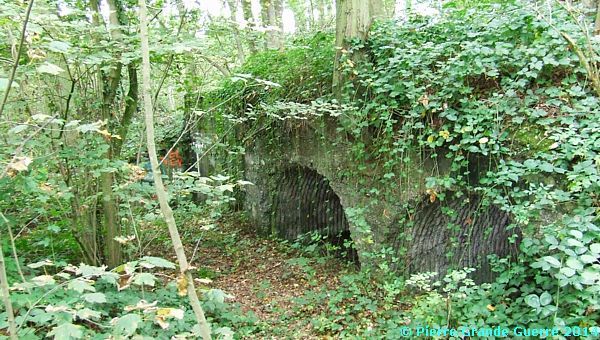
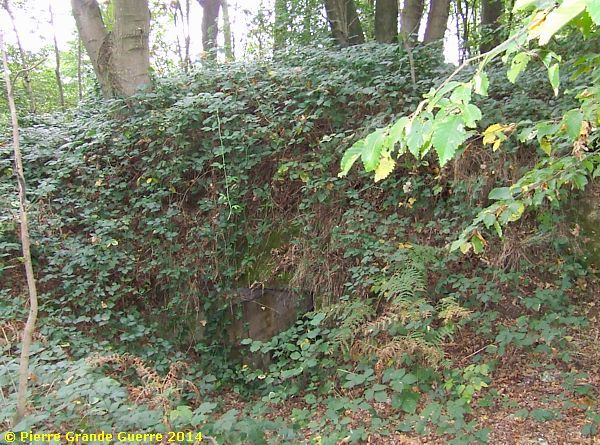
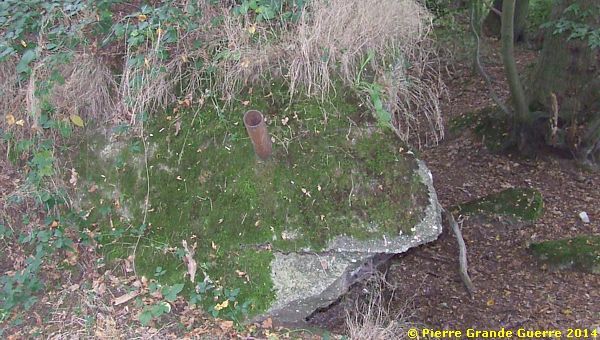
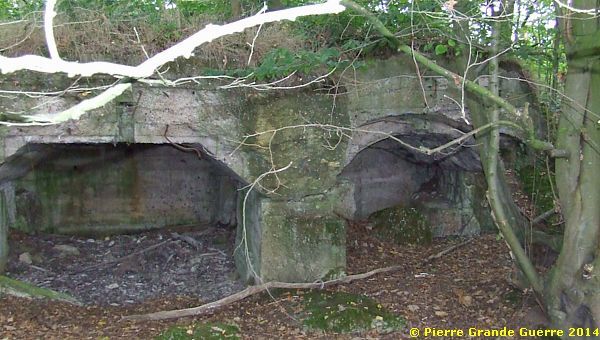
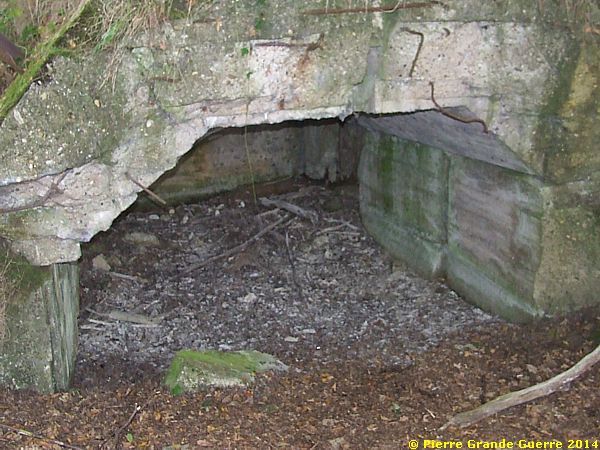
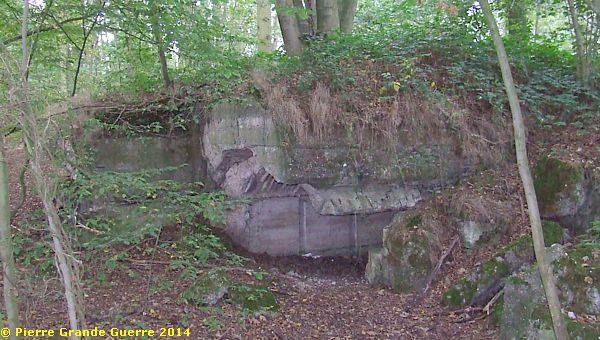
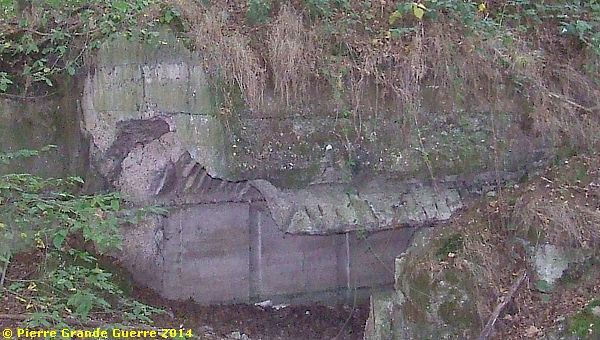

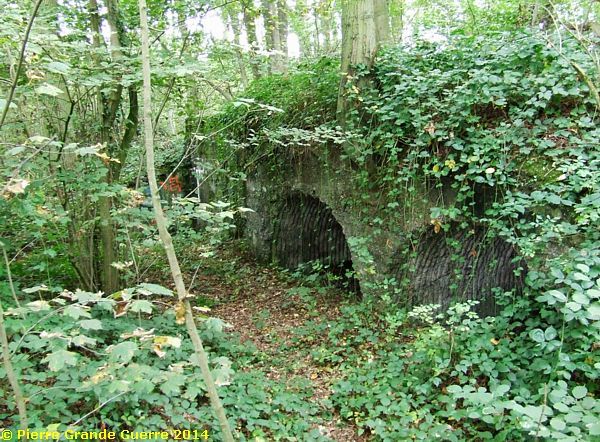
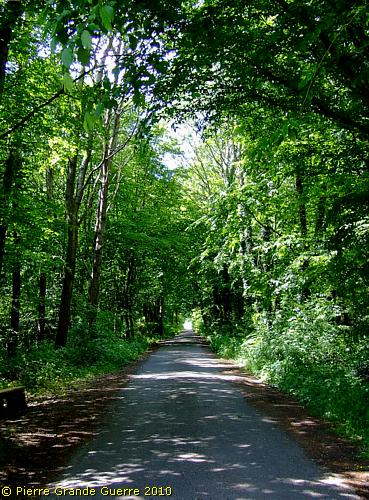
... of Port Arthur / la Bombe, to continue westward, along the Rue du Bois, the D 171, ...
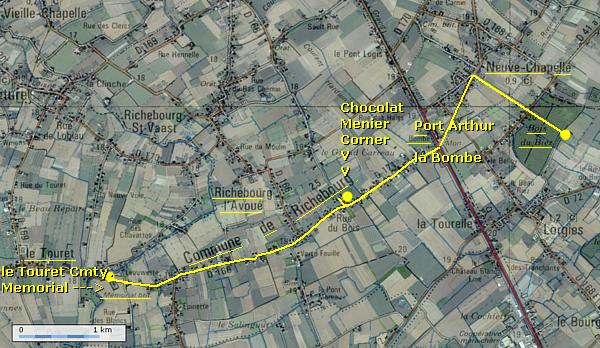
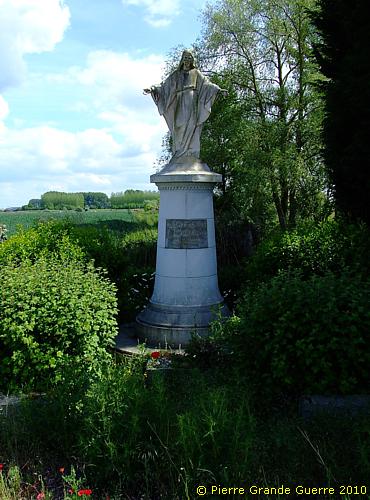
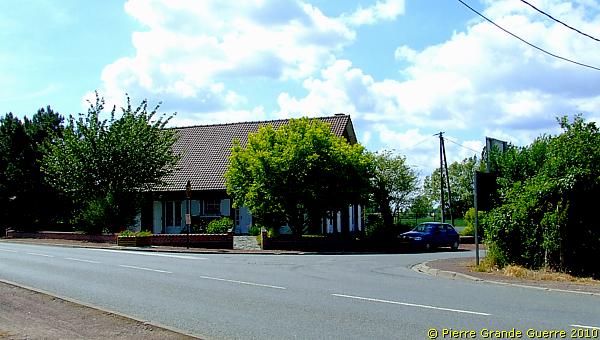
Like in other sectors of the Western Front on that day, as for instance near St. Yvon, Belgium, on 25 December 1914, in these fields around Chocolat Menier Corner, German and Indian soldiers of the 39th Garhwal Rifles rated a Christmas Truce.
The site of the Christmas Truce: the field at Chocolat Menier Corner.
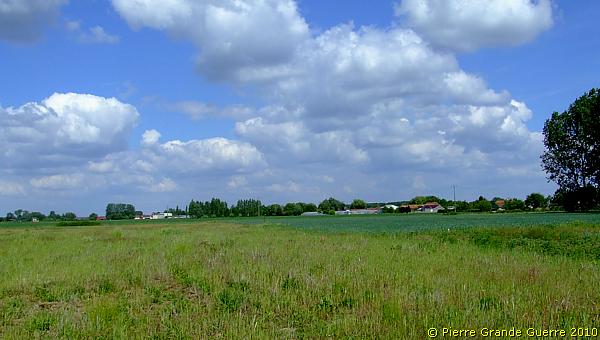

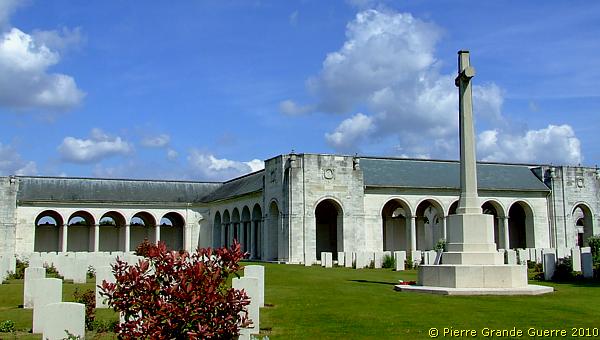
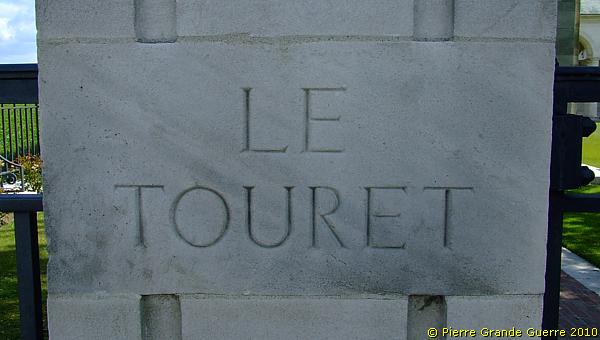
Le Touret Cemetery was begun by the Indian Corps (and in particular by the 2nd Leicesters) in November 1914, and it was used continuously by Field Ambulances and fighting units until March 1918. It passed into German hands in April 1918, and after its recapture a few further burials were made in Plot IV in September and October. The grave of one Officer of the London Regiment was brought in in 1925 from a position on the Estaires-La Bassee road near "Port Arthur". There are now over 900 1914-18 war casualties commemorated in this site. The graves of three men of the King's Liverpool Regiment, which were destroyed by shell fire, are now represented by special headstones. The Cemetery covers an area of 7.036 square metres and is enclosed by a low brick wall. Located at the east end of the cemetery is Le Touret Memorial, which commemorates over 13.000 servicemen, who fell in this area before 25 September 1915 and who have no known grave. |
With a quick glance over the cemetery, ...
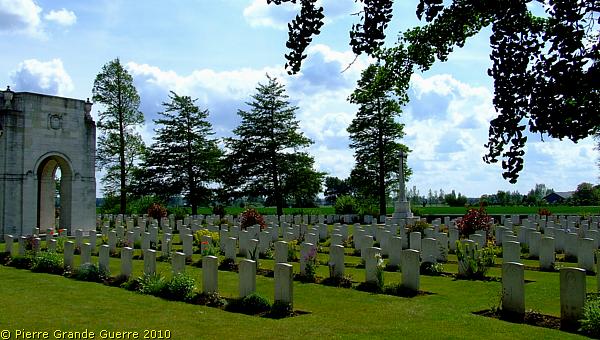
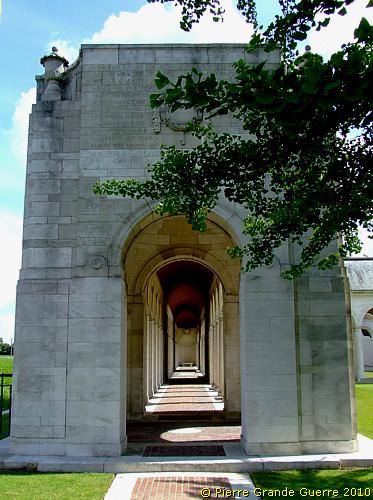
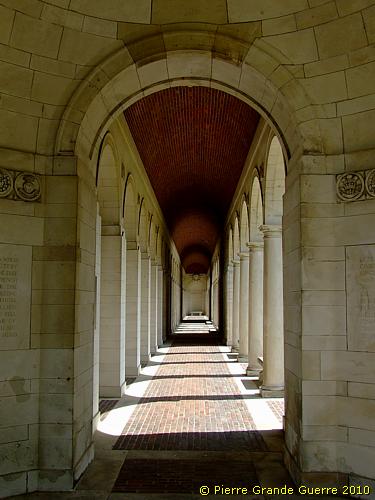
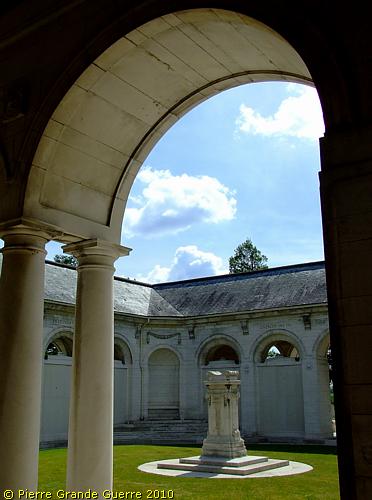

From the gallary one can always see the neighbouring le Touret Cemetery.
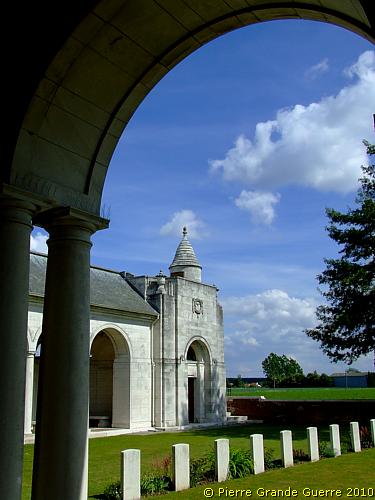
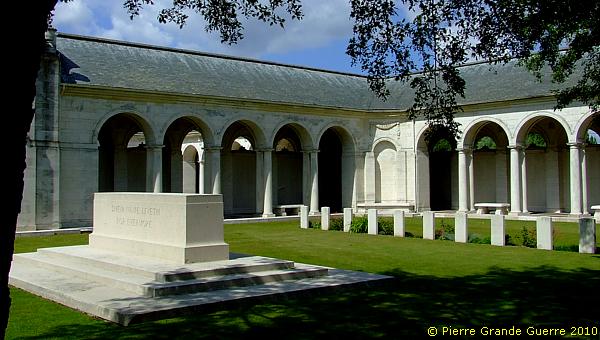

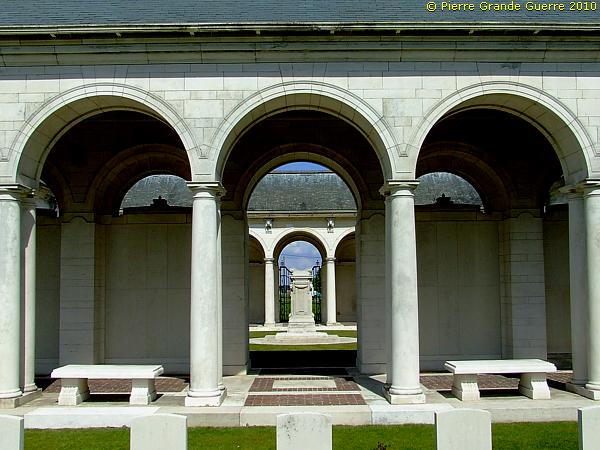

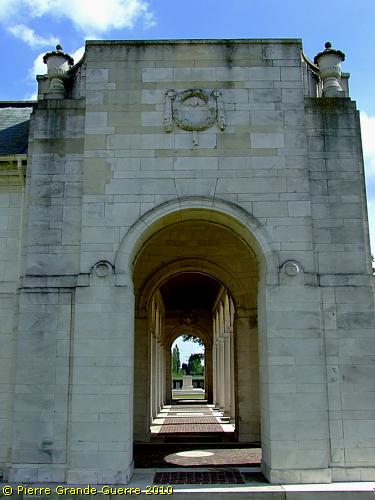
We leave the le Touret Memorial for the next stop at the village of la Couture.
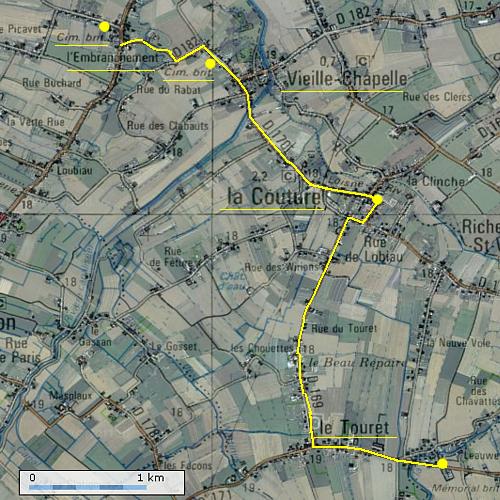
At the foot of the village church of la Couture stands this rather impressive Portuguese Memorial.
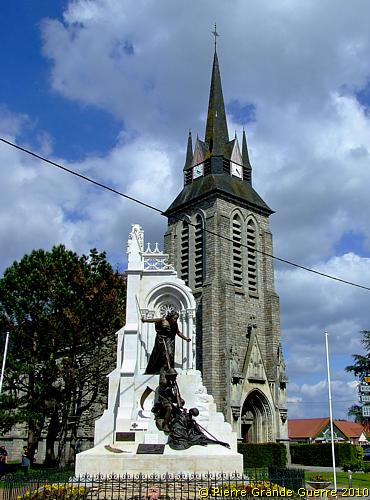
The Portuguese sculptor, Teixeira Lopes, designed this memorial with three figures: ...
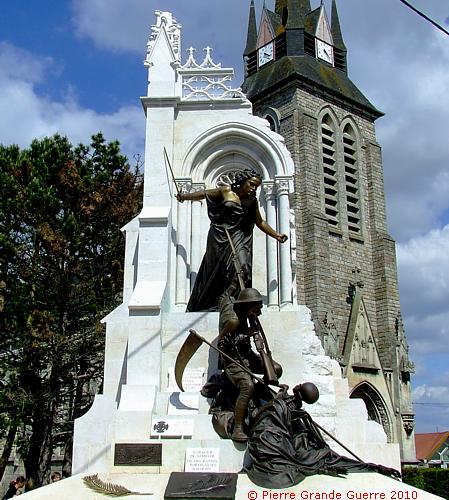
... an angry mother Portugal, ...
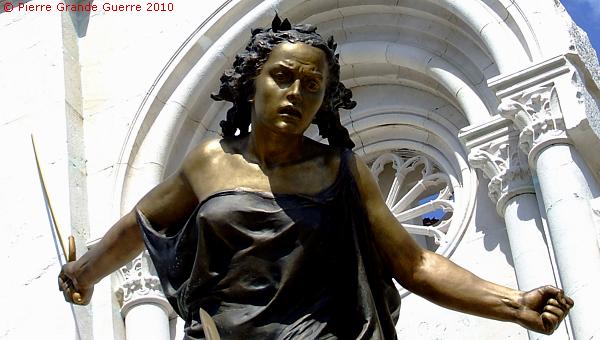
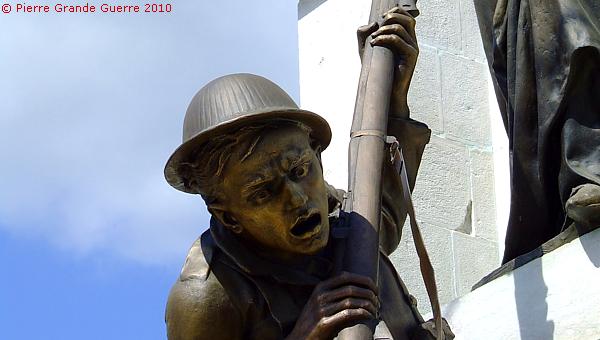
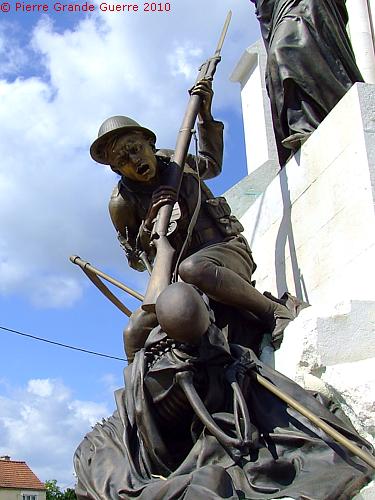
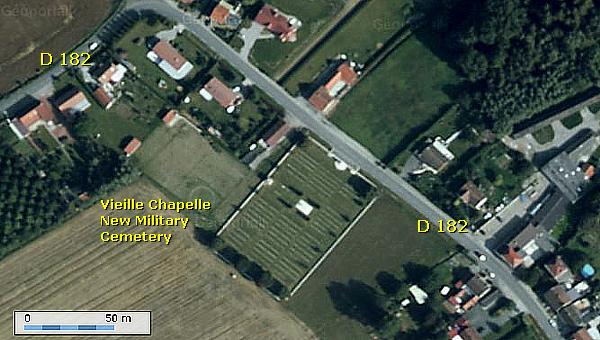
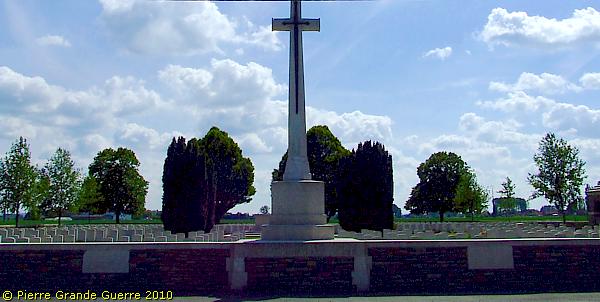
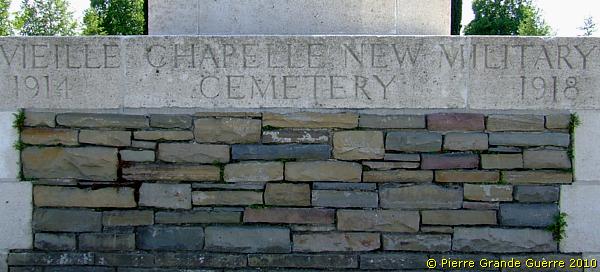
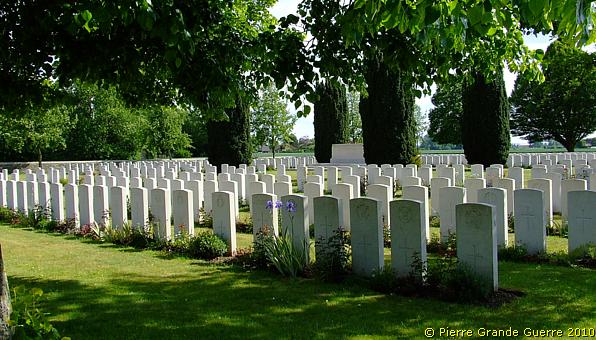
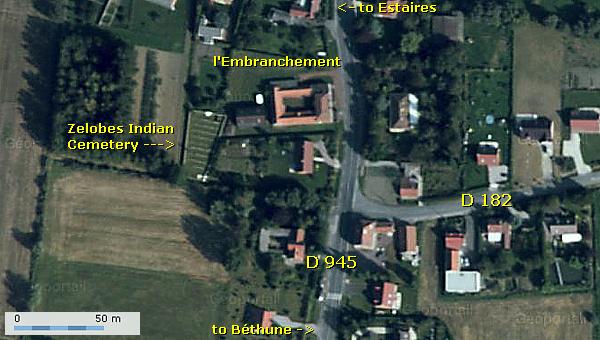

From the early days of the war until 11 April 1918, when it was captured by the Germans, the hamlet of Zelobes-l’Embranchement remained always in British hands. The Germans evacuated the hamlet on 30 August 1918.
Zelobes Indian Cemetery






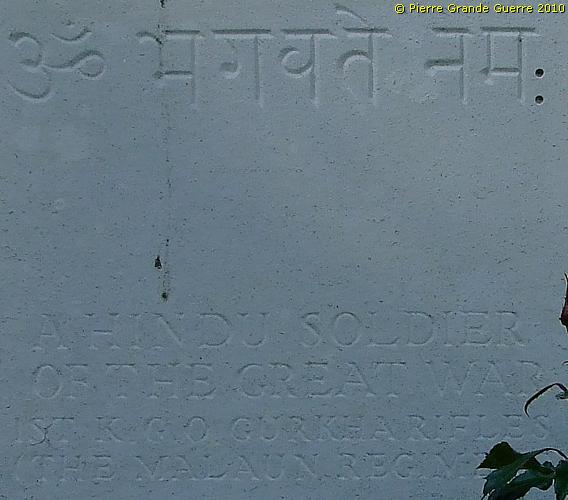
The inscription on a headstone of a Havildar, a Sergeant, of the Gurkha Rifles.


With a last view over Zelobes Indian Cemetery, we end this trip.

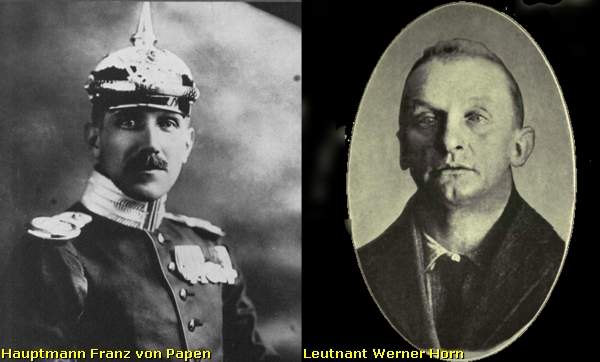
Inleiding: Franz Von Papen & Werner Horn; schaker en pion
Onlangs stuitte ik in een oud boek (1) van 1919 op een opmerkelijk verhaal over een Duitse Luitenant, die in begin februari 1915 een half geslaagde bomaanslag pleegt op een spoorbrug over een grensrivier tussen de Verenigde Staten en Canada. Ook al staat de bekentenis van de dader, Werner Horn, deels in het boek te lezen, de naam van zijn opdrachtgever zal Horn blijven verzwijgen. Na wat verder zoeken vond ik ook de naam van Horn’s opdrachtgever, Franz von Papen, een van de aangeklaagden van het latere Neurenberg Proces in 1946.
In een Grote Oorlog als de Eerste Wereldoorlog is Horn’s aanslag op de brug uiteraard slechts een bescheiden wapenfeit. Toch vermoed ik dat dit relatief onbekende verhaal, dat de geschiedenis is ingegaan als de “ Vanceboro International Bridge Bombing ”, nog interessante kanten kent. Het is onder andere een spionageverhaal over hoe in een groter plan een sluwe schaker zijn naïeve pion offert.
Beknopte situatieschets Canada en de Verenigde Staten in 1915

This trip we start at the Léomont near Vitrimont and we will with some exceptions concentrate on the Battle of Lorraine of August-September 1914 in the area, called, the “Trouée de Charmes”, the Gap of Charmes.
After the Léomont battlefield we continue our explorations to Friscati hill and its Nécropole Nationale. Next we pay a visit to the battlefield of la Tombe to go on to the Château de Lunéville. There we cross the Vezouze to move on southward to the Bayon Nécropole Nationale. At Bayon we cross the Moselle to pass Charmes for the panorama over the battlefield from the Haut du Mont. North-west of Charmes we will visit the British Military Cemetery containing 1918 war victims. From Charmes we go northward to the battlefield of the First French Victory of the Great War, the Battle of Rozelieures of 25 August 1914. North of Rozelieures we will visit the village of Gerbéviller. From there we make a jump northward to visit the ruins of Fort de Manonviller to finish with an interesting French Dressing Station bunker, west of Domjevin.
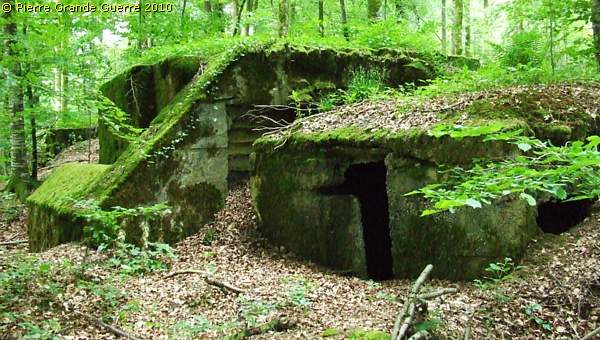

During this visit, we try to focus on the day that the momentum of the battle switched from the French side to the advantage of the Bavarian side: the day of 20 August 1914, when the Bavarians rapidly re-conquered the territory around Morhange , being also the day of the start of their rather successful “Schlacht in Lothringen”.
We will visit beautiful landscapes of the "Parc Naturel Régional de Lorraine", memorials, ossuaries, and cemeteries. Sometimes we will divert to other periods of the Great War, honouring Russian and Romanian soldiers, who died in this sector. We start our route at the border village of Manhoué, and via Frémery, Oron, Chicourt, Morhange, Riche, Conthil, Lidrezing, Dieuze, Vergaville, Bidestroff, Cutting, Bisping we will finish in Nomeny and Mailly-sur-Seille, where the Germans halted their advance on 20 August 1914, and where they constructed from 1915 some interesting bunkers.
